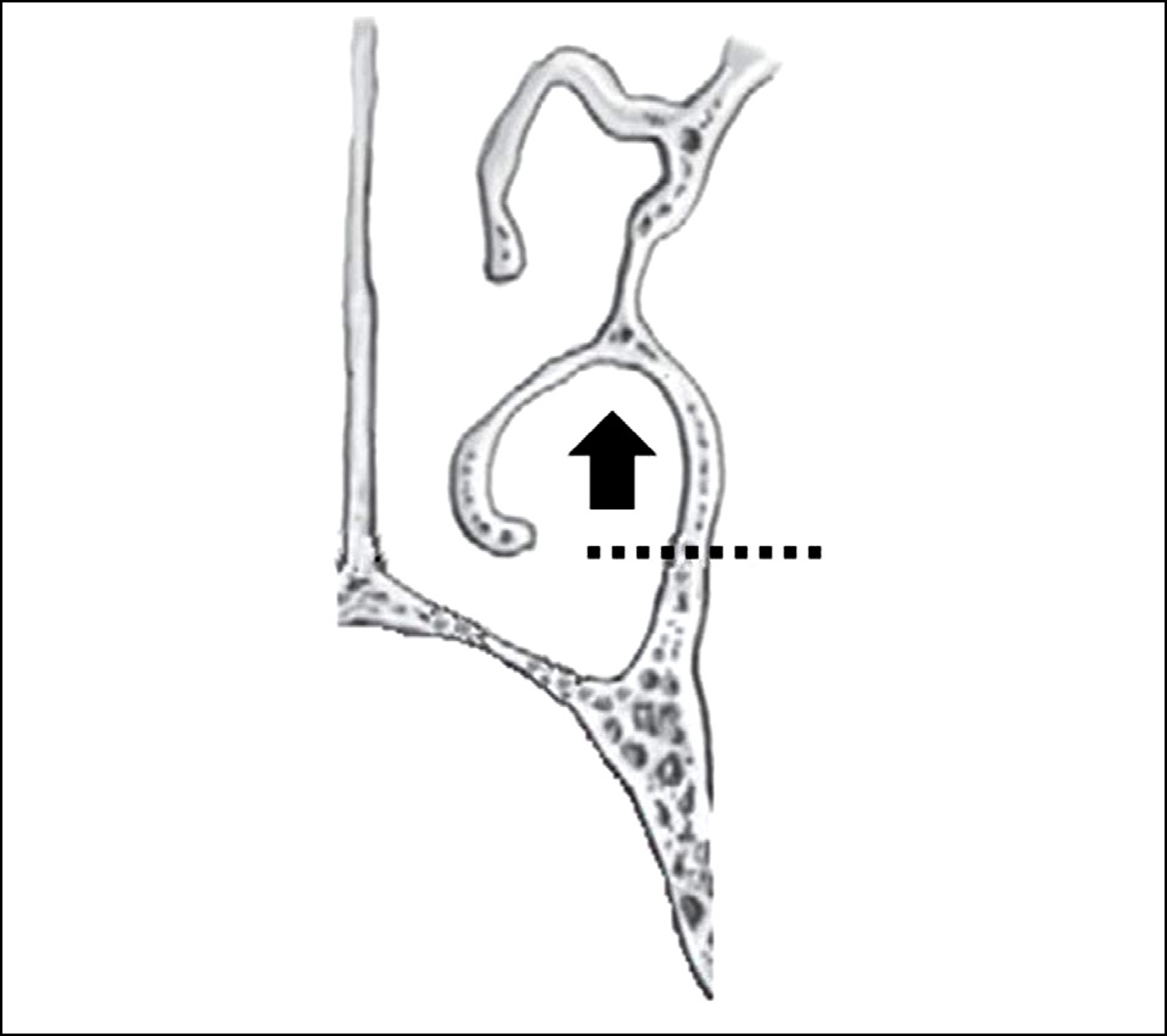J Korean Ophthalmol Soc.
2013 May;54(5):794-797. 10.3341/jkos.2013.54.5.794.
A Case of Nasolacrimal Duct Obstruction after Two-Jaw Surgery
- Affiliations
-
- 1Department of Ophthalmology, Chonbuk National University Medical School, Jeonju, Korea. ahnmin@jbnu.ac.kr
- KMID: 2217048
- DOI: http://doi.org/10.3341/jkos.2013.54.5.794
Abstract
- PURPOSE
To describe a case of nasolacrimal duct obstruction after two-jaw surgery.
CASE SUMMARY
A 22-year-old woman presented with a 1-year history of epiphora after two-jaw surgery. Orbital CT showed 5 mm of focal soft tissue at the level of the distal nasolacrimal duct. Dacryocystography showed complete obstruction at the nasolacrimal duct level. Thus a nasolacrimal duct obstruction was diagnosed by physical and radiologic examination.
CONCLUSIONS
In patients with epiphora who have undergone two-jaw surgery, precise examination and treatment is required in order to exclude nasolacrimal duct obstruction.
Figure
Reference
-
References
1. Menendez LF, Biedlingmaier JF, Tilghman D. Osteomeatal com-plex obstruction and sinusitis following Le Fort I osteotomy. J Oral Maxillofac Surg. 1996; 54:103–4.
Article2. Bruno C, Fernanda N, Belini M. Bloody tears after miniplate osteo-synthesis for Le Fort I osteotomy. Asian J Oral Maxillofac Surg. 2011; 10:1016–8.3. Shoshani Y, Samet N, Ardekian L, Taicher S. Nasolacrimal duct in-jury after Le Fort I osteotomy. J Oral Maxillofac Surg. 1994; 52:406–7.
Article4. Keller EE, Sather AH. Quadriangular Le Fort I osteotomy : Surgical technique and review of 54 patients. J Oral Maxillofac Surg. 1990; 48:2–11.5. Little C, Mintz S, Elinger AC. The distal lacrimal ductal system and traumatic epiphora. Int J Oral Maxillofac Surg. 1991; 20:31–5.
Article6. Demas PN, Sotereanos GC. Incidence of nasolacrimal injury and turbinectomy associated atrophic rhinitis with Le Fort I osteotomies. J Craniomaxillofac Surg. 1989; 17:116–8.7. You ZH, Bell WH, Finn RA. Location of the nasolacrimal canal in relation to the high Le Fort I Osteotomy. J Oral Maxillofac Surg. 1992; 50:1075–80.
Article8. Bays RA, Bouloux GF. Complications of orthognathic surgery. Oral Maxillofacial Surg Clin N Am. 2003; 15:229–42.
Article9. Kim SG, Park SS. Incidence of complications and problems related to orthognathic surgery. J Oral Maxillofac Surg. 2007; 65:2438–44.
Article10. Li KK, Meara JG, Rubin PA. Orbital compartment syndrome fol-lowing orthognathic surgery. J Oral Maxillofac Surg. 1995; 53:964–8.
Article
- Full Text Links
- Actions
-
Cited
- CITED
-
- Close
- Share
- Similar articles
-
- Nasolacrimal Duct Obstruction Following Midfacial Autologous Fat Injection
- A Case of Angioleiomyoma in Nasolacrimal Duct
- A Case of Nasolacrimal Duct Obstruction Caused by a Lacrimal Sac Retention Cyst
- The Methods of Insertiong the Root-type Lacrimal Tube and an Artificial nasolacrimal duct into the Men's
- Silicone Intubation for Nasolacrimal Duct Obstruction in Adult





